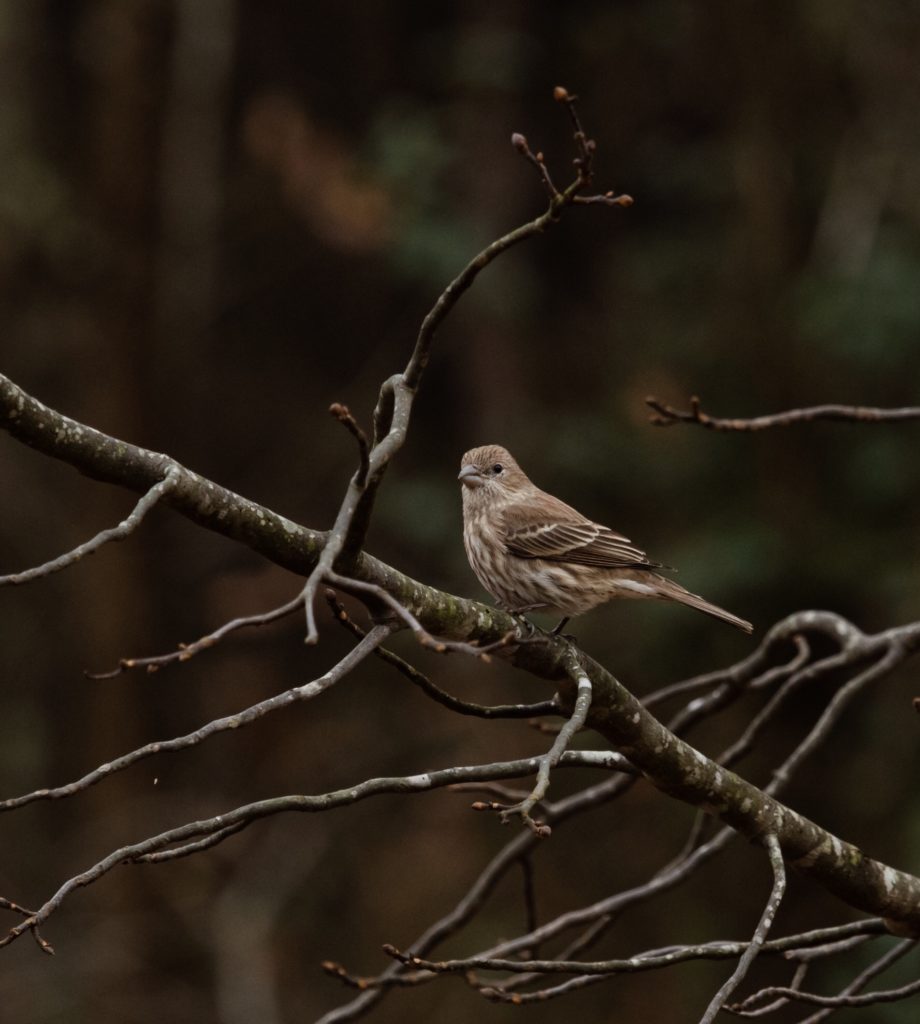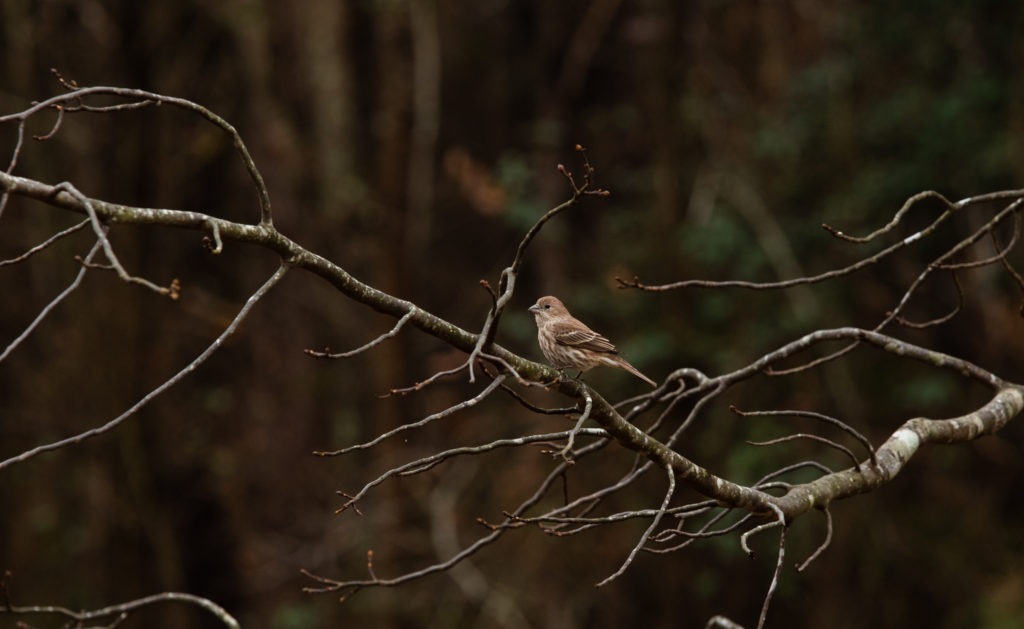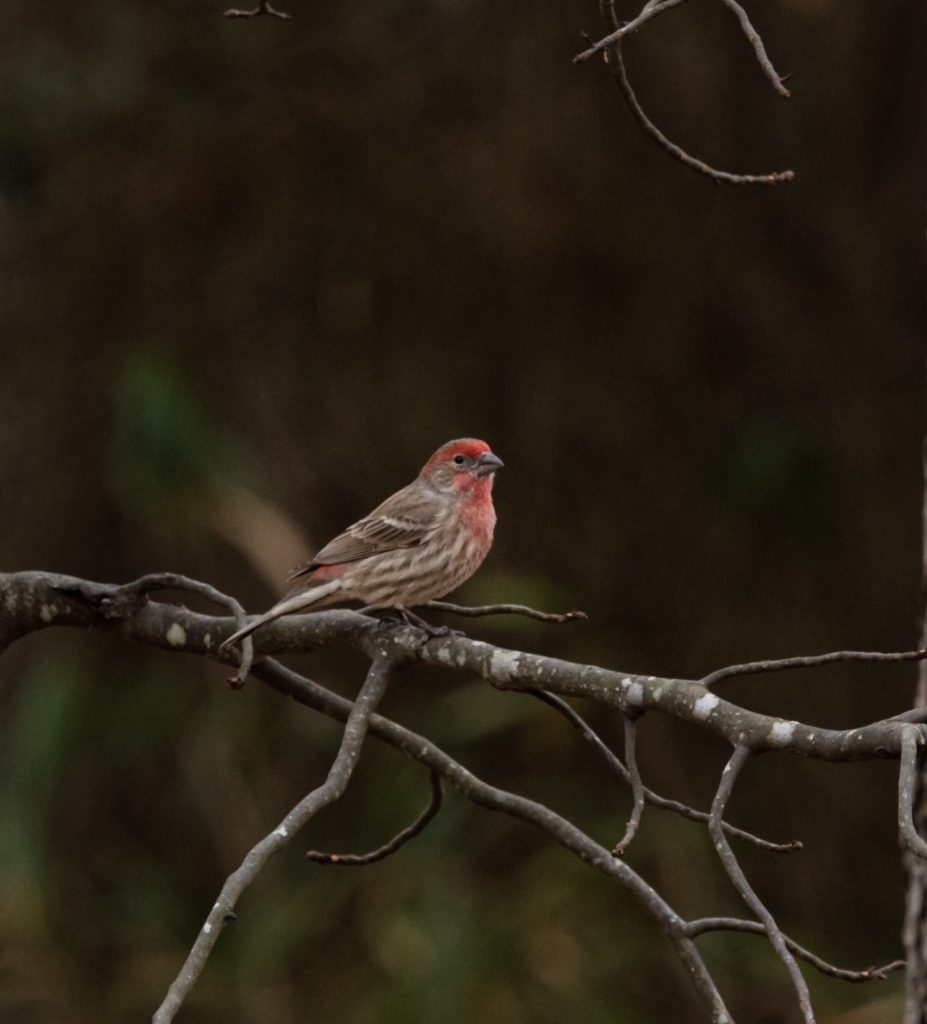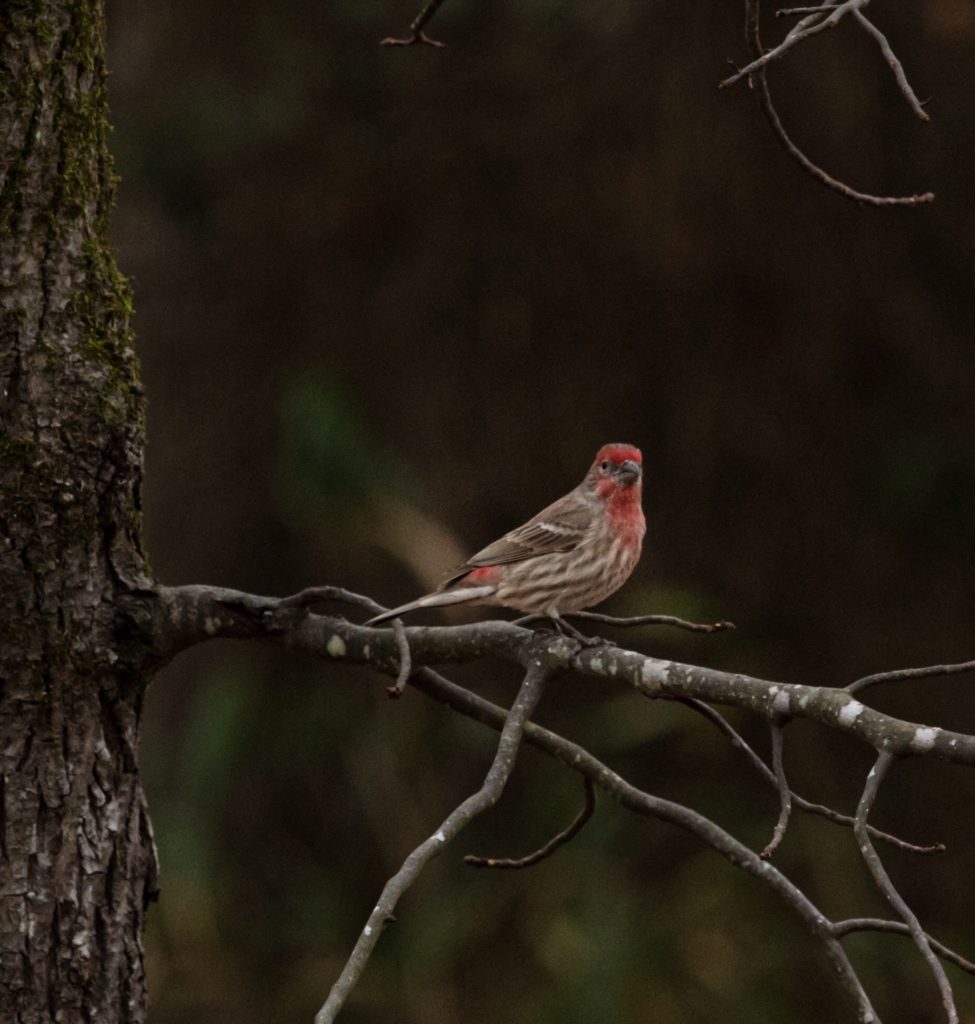With the irruption of unusual species of birds spreading out all across North Carolina, the ones that are getting the most attention out there are the Purple Finches, Pine Siskins and Evening Grosbeaks.
With so many interesting sightings taking place (and taking up space on social media), it’s easy to overlook our more common, yet absolutely lovely birds, the House Finch.
These gregarious little gems are a year round resident of the Tarheel State and are indeed a familiar visitor to our yards and suburban parks. Like most species of Finches, they can be found foraging for a meal in wide open brush fields.
They primarily eat grains, seeds and berries, and are voracious consumers of weed seeds such as nettle and dandelion.
They’ll also dine on small insects, such as aphids and plant lice. And yes, of course they’re frequent visitors to our feeders, particularly if you stock them with sunflower seeds or Nyjer/thistle seed.
I photographed this pair while on a recent birding trip at the Prairie Ridge Ecostation in Raleigh.
The male featured in the first photo has a vivid purplish-red band of feathers around his head along with a red chin, throat and rump.
His mate featured in the second photo is dressed in soft gray-brown hues and dark-brown blurry streaks against her grayish-white belly. It appears to me like she’s got a tinge of orange plumage color on her crown, below her eyes and on her rump too.
Usually House Finches travel together in large flocks during the winter. These two were indeed part of a larger group but happened to be perched together about 50ft away from the rest of the other Finches.
This encounter is a good example why I enjoy birding at the Prairie Ridge Ecostation so much. With an open grassy habitat that serves as a home for many species of birds, it’s a wonderful place to go in the wintertime if you want to feel the sun on your face and the wind on your back all while exploring the great outdoors.
I can’t wait to get back out there tomorrow morning for another group trip!
Photos by @sally_siko of @birdwatching_nc on the @canonusa#5ds








